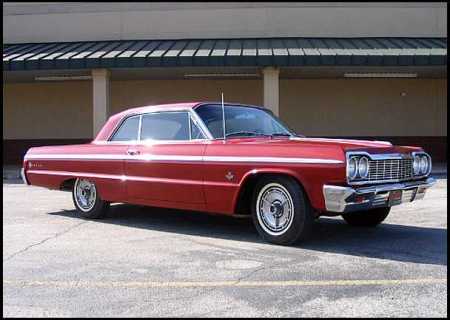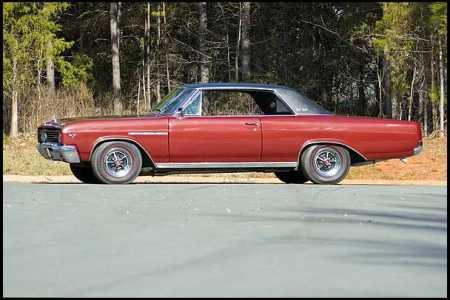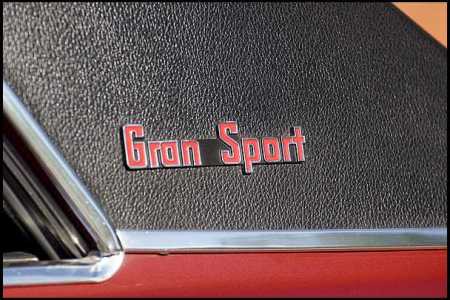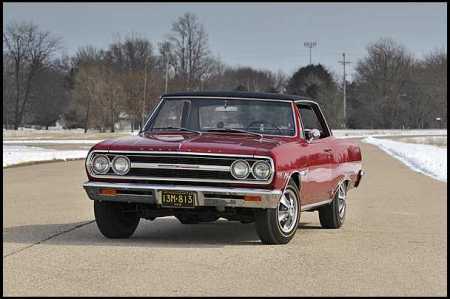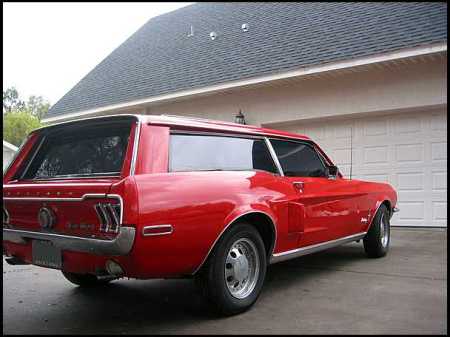 Well despite the fact that January started the new year over two weeks ago, the year officially starts this coming week for the Muscle Car crowd. That is because the Auctions are beginning in Arizona. You have the Barrett-Jackson begin on the 17th and then Russo and Steele on the 19th. Then on the 20th you have Gooding and R-M startup theirs. Arizona has a definite edge in the marketplace due to the number of auctions and the fact that they start before anyone else. While I follow these and they do tend to set prices and trends for the coming year, they also tend to be more show than sale for guys like me.
Well despite the fact that January started the new year over two weeks ago, the year officially starts this coming week for the Muscle Car crowd. That is because the Auctions are beginning in Arizona. You have the Barrett-Jackson begin on the 17th and then Russo and Steele on the 19th. Then on the 20th you have Gooding and R-M startup theirs. Arizona has a definite edge in the marketplace due to the number of auctions and the fact that they start before anyone else. While I follow these and they do tend to set prices and trends for the coming year, they also tend to be more show than sale for guys like me.
By that I do not mean to take anything away from them because all are great auctions; what I am attempting to say is that I am looking for bargains to resale and not looking for vehicles to add to a collection. I do not buy cars for what they are worth, I buy them to resale and make money. For me the auction to go to in January is in Florida in a week. That is for those who do not follow my blog on a regular basis, the Mecum Auction in Kissimmee.
The types of cars are “collector” vehicles at all of these auctions, but that term has become very obscured over the years. You will find everything from a 1940 Ford Street Rod to a 1987 Chevrolet Monte Carlo. And for me and probably 90% of the public, we wonder why a 1995 Mercedes-Benz 420 would be considered a “collector” vehicle? Same with a 2006 Silverado, just because it has custom fiberglass panels bolted onto it with a 20,000 dollar paint job. Custom to me would be that 1940 Ford Street Rod or the pictured 1968 Ford Mustang Station Wagon. After all, when if ever have you seen a Mustang Station Wagon?
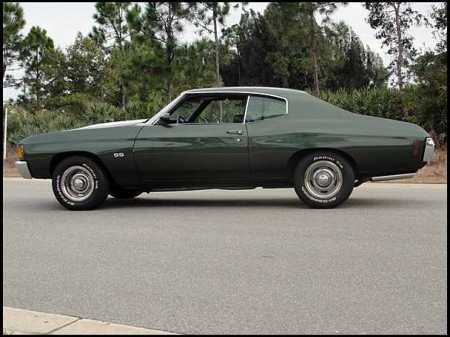 What you will find would be cars like this 1972 SS Chevelle with it’s 402 Factory big block. The venerable 396 was upped in displacement, allegedly because of blocks having to be rebored during production a year or so earlier and Chevrolet kept the SS396 designation on their literature as well as labeling on the vehicles. In 1972 the Chevelle SS396 was just called the “SS” because the package could be ordered with any engine and was considered merely a trim package.
What you will find would be cars like this 1972 SS Chevelle with it’s 402 Factory big block. The venerable 396 was upped in displacement, allegedly because of blocks having to be rebored during production a year or so earlier and Chevrolet kept the SS396 designation on their literature as well as labeling on the vehicles. In 1972 the Chevelle SS396 was just called the “SS” because the package could be ordered with any engine and was considered merely a trim package.
While the Chevelle SS396 gets most of the attention due to its popularity when it was new, the same 396 was available in the 1969 Camaro.
 The SS/RS Camaro was smaller and lighter than the Chevelle so as a result was faster as well. The main drawback was that it may have been too much power for the car. The Chevelle could be equipped to actually put the power to the pavement which the Camaro needed someone who could actually drive the car to get the most out of it. In 1976, I had a good friend in Kendallville, Indiana who had one of these and his was also a convertible although it was a nice “Jade Green” color with the white SS stripes up the hood and down the trunk lid. It was an awesome performer to say the least. Forget the factory ratings on power for any of the true Muscle Cars as the 396 had to be over 450 horsepower and the factory was claiming from 350-375.
The SS/RS Camaro was smaller and lighter than the Chevelle so as a result was faster as well. The main drawback was that it may have been too much power for the car. The Chevelle could be equipped to actually put the power to the pavement which the Camaro needed someone who could actually drive the car to get the most out of it. In 1976, I had a good friend in Kendallville, Indiana who had one of these and his was also a convertible although it was a nice “Jade Green” color with the white SS stripes up the hood and down the trunk lid. It was an awesome performer to say the least. Forget the factory ratings on power for any of the true Muscle Cars as the 396 had to be over 450 horsepower and the factory was claiming from 350-375.
 For any of my regular readers, I apologize if you came here this week expecting to see the blog about the other 1965 vehicles, I will get to that maybe next week. For you guys, here’s a 1972 Dodge Challenger R/T with the 340. Unlike it’s “sister-car” the ‘Cuda, the Challenger was actually 2 inches longer in wheelbase because Dodge felt the longer wheelbase gave better performance and handling. It was a lesson that their engineers had learned from all those Coronet’s, Super Bee’s, Charger’s and models that came before. With the “Muscle Car Era” ending with the 1971 model year, this should sell for a reasonable price, I assume.
For any of my regular readers, I apologize if you came here this week expecting to see the blog about the other 1965 vehicles, I will get to that maybe next week. For you guys, here’s a 1972 Dodge Challenger R/T with the 340. Unlike it’s “sister-car” the ‘Cuda, the Challenger was actually 2 inches longer in wheelbase because Dodge felt the longer wheelbase gave better performance and handling. It was a lesson that their engineers had learned from all those Coronet’s, Super Bee’s, Charger’s and models that came before. With the “Muscle Car Era” ending with the 1971 model year, this should sell for a reasonable price, I assume.
 And since I mention the Charger, we come to the first year and indeed only year that the Super Bee was based on the Dodge Charger platform. 1971 to be exact. Final year for the purists to consider it a Muscle Car as well. There are collectors that consider this the best Muscle Car ever built due to all of it’s one and only circumstances. A one year shot at immortality as it happens. This one has the 440 engine and comes in the ultra cool Citron Yellow to attract attention.
And since I mention the Charger, we come to the first year and indeed only year that the Super Bee was based on the Dodge Charger platform. 1971 to be exact. Final year for the purists to consider it a Muscle Car as well. There are collectors that consider this the best Muscle Car ever built due to all of it’s one and only circumstances. A one year shot at immortality as it happens. This one has the 440 engine and comes in the ultra cool Citron Yellow to attract attention.
 The Charger here is a 1969 Charger 500. This is one of the rarest models produced under the Charger name and only was made in 1969 and 1970. The 500 model was designed to win in NASCAR and as a result the people at Dodge had to have a production model for sale. It had a flush rear window without the normal “sail-panel” roofline extensions. As I recall it had a slightly longer nose as well. This particular car was once owned by none other than Galen Govier. For those who are not into the car hobby, he is the most well-known Mopar expert that there is and he does verification certificates for the collector’s on their vehicles. So as a result it is probably one of the most documented vehicles on the planet.
The Charger here is a 1969 Charger 500. This is one of the rarest models produced under the Charger name and only was made in 1969 and 1970. The 500 model was designed to win in NASCAR and as a result the people at Dodge had to have a production model for sale. It had a flush rear window without the normal “sail-panel” roofline extensions. As I recall it had a slightly longer nose as well. This particular car was once owned by none other than Galen Govier. For those who are not into the car hobby, he is the most well-known Mopar expert that there is and he does verification certificates for the collector’s on their vehicles. So as a result it is probably one of the most documented vehicles on the planet.
For a final photo I am trying a new concept. To get a little more feedback from people who visit my blog I am having a “Guess-This-Car” contest. While I would like to give “A Million Dollar Prize” for the first correct answer, I would be about $999,999 and some change short for that, so there is no prize involved. Just the satisfaction of knowing your stuff.
Answer if you can…..what year and model is it?
Davey Boy
